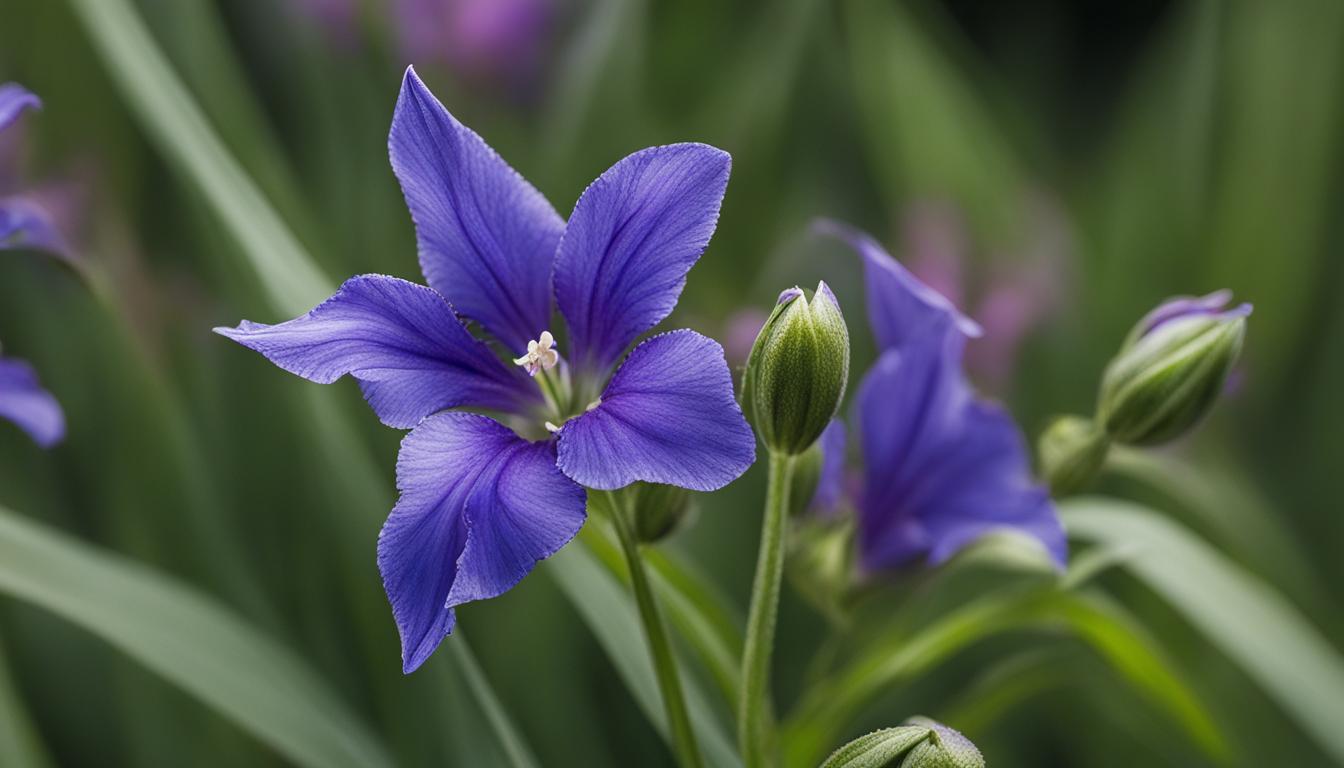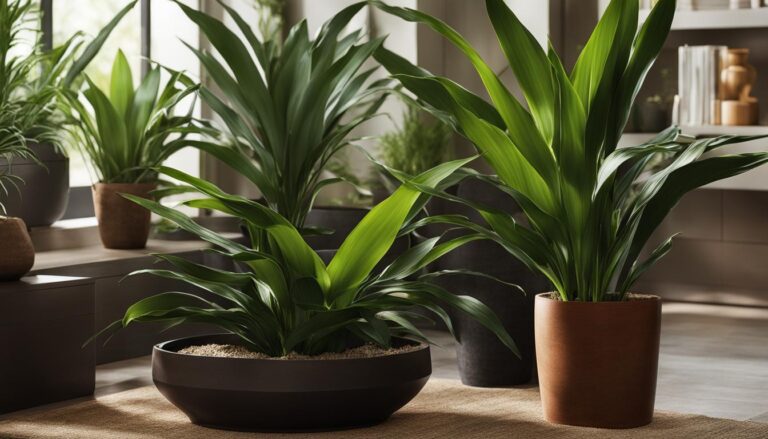
Spiderwort, also known as Tradescantia, is a captivating plant that is popular among indoor and outdoor gardeners. It gets its name from its spider-like flowers, which come in various striking colors such as deep blues, purples, pinks, and whites.
Spiderwort is a hardy and resilient plant that is native to North and South America. It attracts pollinators like bees, butterflies, and hummingbirds and is easy to propagate through dividing clumps or taking stem cuttings. Spiderwort has medicinal properties and its leaves are edible.
It is also a symbol of hope and rebirth. With minimal care requirements, Spiderwort is a low-maintenance plant that blooms in the morning and closes in the afternoon. It has inspired artists and poets with its beauty and unique characteristics.
Spiderwort: A Name Rooted in Nature and History
Spiderwort, also known as Tradescantia, derives its name from the distinct characteristics of its flowers and stems. The three-petaled flowers of Spiderwort resemble spider legs, with their elongated stamens stretching out in a captivating display. This unique feature gives the plant its common name, “Spiderwort.”
The name “Spiderwort” is derived from the Greek word “tradescantia,” which honors the legacy of John Tradescant, a renowned 17th-century English botanist.
As the Keeper of his Master’s Gardens, Vines, and Silkworms, John Tradescant had a preference for visually intriguing plants and trees due to his lack of sense of smell. Spiderwort’s angular leaves and stems also bear a resemblance to spider legs, further contributing to its name and allure.
What sets Spiderwort apart is the viscous stem secretion it releases when its stems are cut. This secretion, once hardened, transforms into delicate, threadlike strands that resemble a spider’s web.
This fascinating characteristic adds to the plant’s charm and reflects its connection to its spider-like namesake.
Spiderwort: A Name Rooted in Nature and History
| Botanical Name | Common Name | Characteristics |
|---|---|---|
| Tradescantia | Spiderwort | Flowers with spider-like appearance, angular leaves and stems resembling spider legs, viscous stem secretion |
Spiderwort’s name is not only rooted in its physical attributes but also in the historical legacy of John Tradescant and the visual appeal of its unique flowers and stems. This captivating plant continues to intrigue gardeners and nature enthusiasts alike, showcasing the fascinating connections between nature and human history.
The Beauty and Symbolism of Spiderwort in Gardens
Spiderwort, also known as Tradescantia, is a visually captivating and adaptive plant that offers not only beauty but also numerous benefits in gardens and landscapes.
With its vibrant flowers and unique foliage, Spiderwort adds a touch of enchantment to any outdoor space. But its appeal goes beyond aesthetics, as it attracts important pollinators like bees, butterflies, and hummingbirds, contributing to the overall health of the garden ecosystem.
In addition to its role in supporting pollinators, Spiderwort has a long history of medicinal use. Its leaves have been traditionally used to treat various ailments such as skin wounds, inflammation, and digestive issues. The plant’s edible leaves also add a unique flavor to salads and cooked dishes, making it a versatile addition to any kitchen garden.
Spiderwort is not just a plant, but also a symbol of hope and rebirth. In folklore and mythology, it is associated with concepts of new beginnings and rejuvenation. Its resilient nature and ability to thrive in different environments embody the idea of resilience and transformation.
Benefits and Symbolism of Spiderwort in Gardens
| Benefits | Symbolism |
|---|---|
| Attraction of pollinators like bees, butterflies, and hummingbirds | Hope and rejuvenation |
| Medicinal properties for treating skin wounds, inflammation, and digestive issues | New beginnings |
| Edible leaves add unique flavor to salads and cooked dishes | Resilience |

With its adaptability, pollinator attraction, medicinal properties, and symbolic significance, Spiderwort is not just a beautiful plant, but also a valuable addition to any garden or landscape. Whether you are a seasoned gardener or just starting out, Spiderwort’s low-maintenance nature and visual appeal make it an excellent choice for bringing natural beauty and meaningful symbolism to your outdoor space.
The Appeal and Cultivation of Spiderwort in Gardens
Spiderwort, scientifically known as Tradescantia, is a versatile and low-maintenance plant that holds great appeal for gardeners. Whether you have a green thumb or are just starting your gardening journey, Spiderwort is an excellent choice to enhance the beauty of your garden.
One of the key advantages of Spiderwort is its adaptability. This resilient plant can thrive both indoors and outdoors, making it a versatile addition to any garden.
It can withstand different sunlight conditions, from full sunlight to partial shade, allowing you to grow it in various areas of your garden or even inside your home.
Caring for Spiderwort is a breeze, even for those with limited gardening experience. It prefers well-drained soil and needs regular watering to maintain consistent moisture levels.
While fertilizer can be used during the growing season, it is not necessary for the plant’s survival. Spiderwort’s ability to flourish with minimal care requirements makes it an ideal choice for busy gardeners.
With its vibrant and eye-catching blooms, Spiderwort adds a touch of beauty to any garden or landscape design. Its unique petals in shades of blue, purple, pink, and white create a captivating display.
Whether you are looking to create a focal point or add a splash of color to your garden, Spiderwort is sure to deliver.
FAQ
How do I propagate Spiderwort?
Spiderwort can be easily propagated through dividing clumps or taking stem cuttings. Simply separate the clumps or cut a healthy stem and plant it in well-drained soil. Keep the soil moist until new growth appears.
What are the care requirements for Spiderwort?
Spiderwort is a low-maintenance plant. It prefers well-drained soil and can tolerate both full sunlight and partial shade. Water regularly to keep the soil consistently moist, but avoid overwatering. Fertilizer can be added during the growing season, but it is not necessary for the plant’s survival.
Can Spiderwort be grown indoors?
Yes, Spiderwort can be grown indoors. It thrives in bright, indirect light and can be placed near a window. Make sure to allow the soil to dry slightly between waterings and provide good air circulation around the plant.
Will Spiderwort attract pollinators to my garden?
Yes, Spiderwort is known to attract pollinators such as bees, butterflies, and hummingbirds. Planting Spiderwort in your garden can help support the overall health of the ecosystem and promote biodiversity.
Are Spiderwort leaves edible?
Yes, Spiderwort leaves are edible. They can add a unique flavor to salads and can also be cooked as a leafy green vegetable. Make sure to wash the leaves thoroughly before consuming.
Is Spiderwort a good choice for landscaping?
Spiderwort is a versatile plant that can be used in landscaping. Its vibrant flowers and unique foliage make it a visually captivating addition to any garden or landscape design. It can be planted as a border plant, in rock gardens, or in mixed flower beds to add color and texture.







One Comment
Comments are closed.